Abstract
Asparagine accounted for 50 to 70% of the nitrogen carried in translocatory channels serving fruit and seed of white lupin (Lupinus albus L.). Rates of supply of the amide always greatly exceeded its incorporation as such into protein. An asparaginase (l-asparagine amido hydrolase EC 3.5.1.1) was demonstrated in crude extracts of seeds. In vitro activity was up to 5 μmoles of aspartate formed per hour per gram fresh weight at the apparent KmAsn value of 10 mM, and this more than accounted for the estimated rates of asparagine utilization in vivo. Asparaginase activity per seed increased 10-fold in the period 5 to 7 weeks after anthesis, coinciding with early stages of storage protein synthesis in the cotyledons.
Double labeled (14C (U), 15N (amide)) asparagine was fed to fruiting shoots through the transpiration steram. Fruit phloem sap analysis indicated that virtually all of the label was translocated to seeds in the form of asparagine. In young seeds 15N from asparagine breakdown was traced to the ammonia, glutamine, and alanine of endospermic fluid, the 14C appearing mainly in nonamino compounds. In the cotyledon-filling stage the C and N of asparagine was contributed to a variety of amino acid residues of protein.
Full text
PDF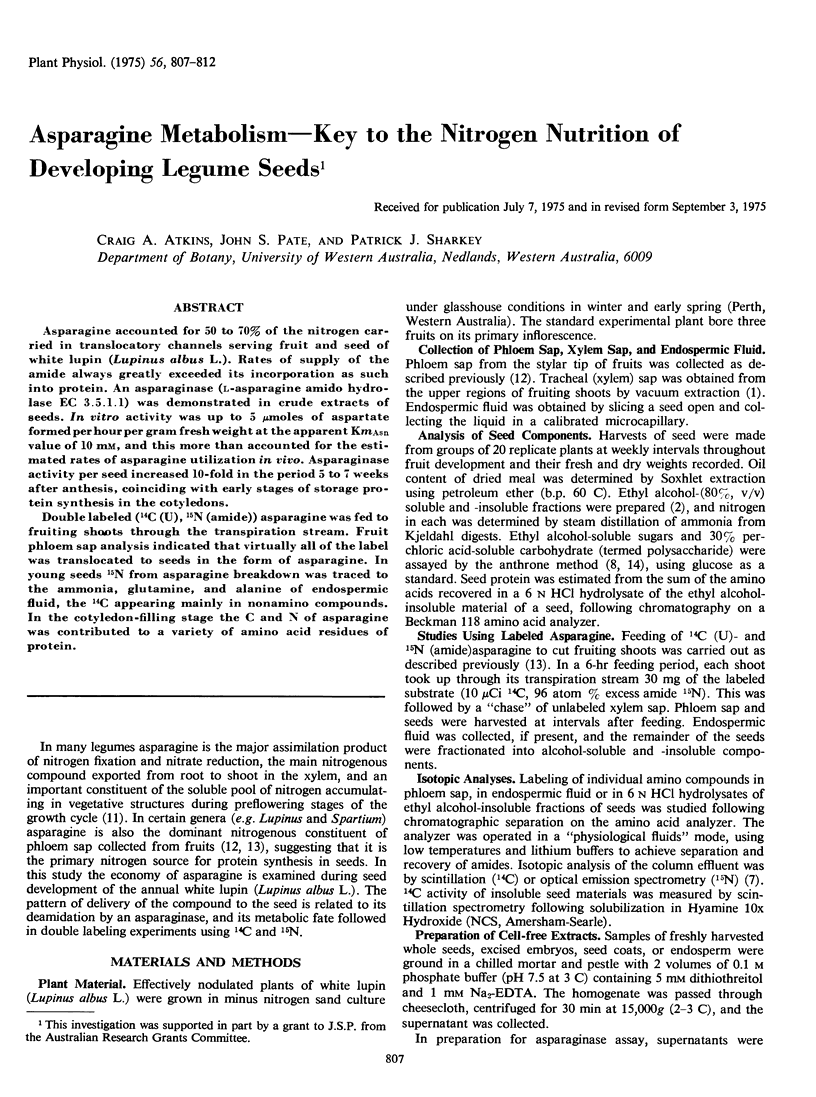
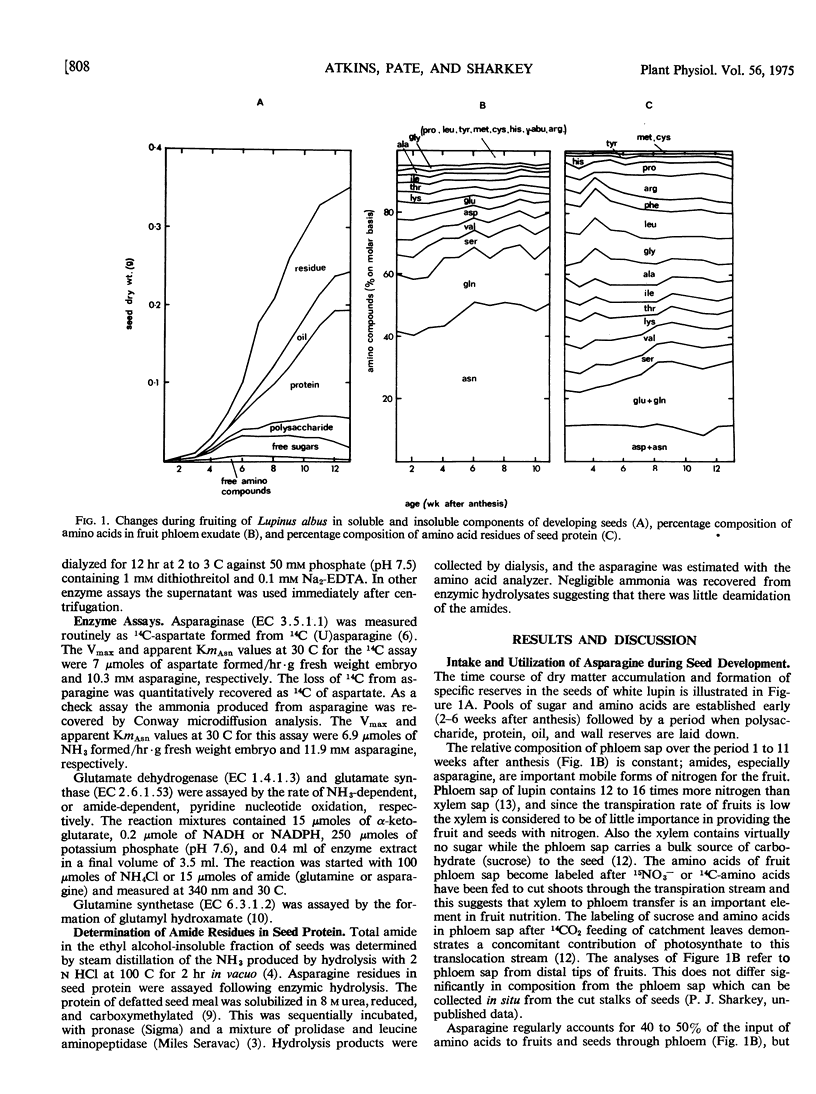
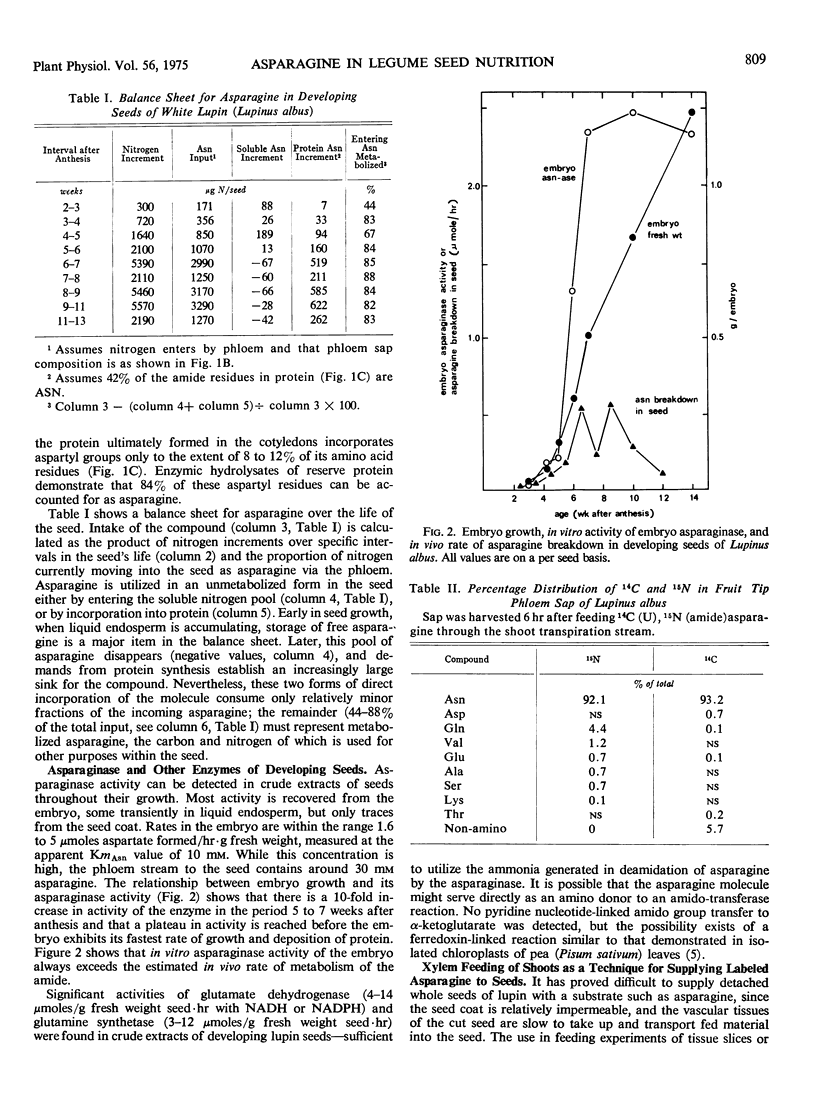
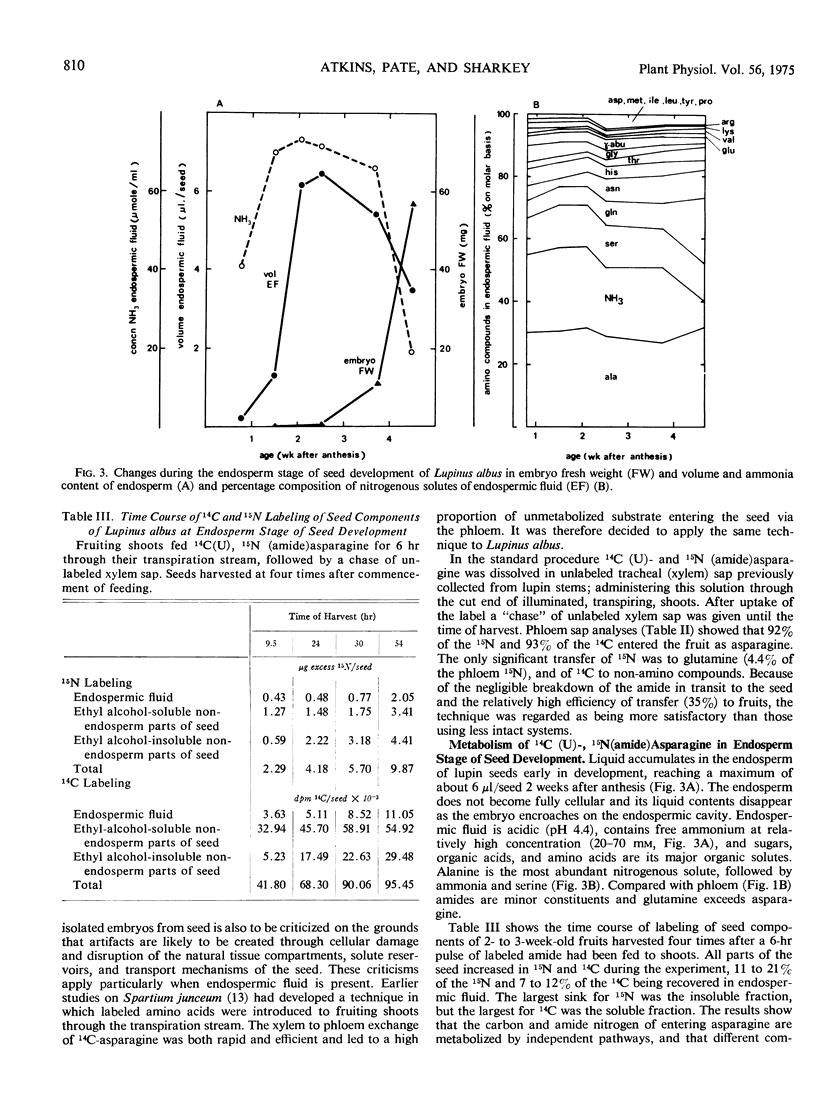
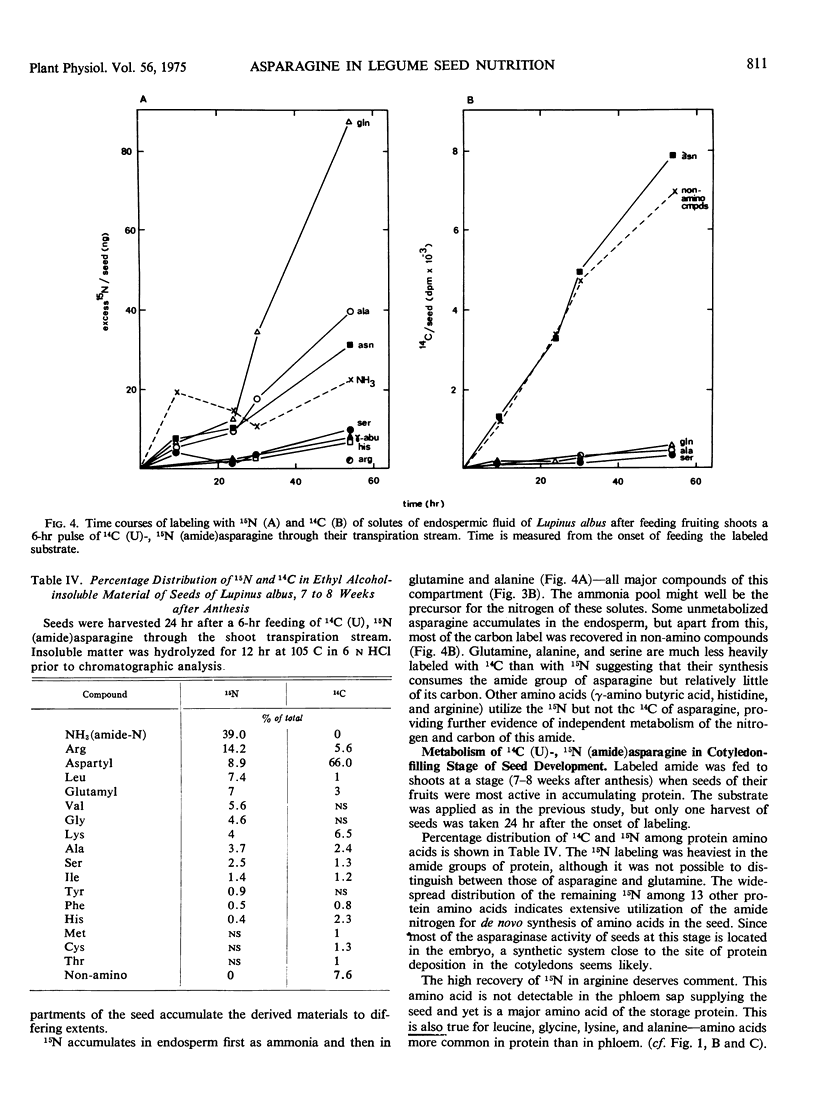
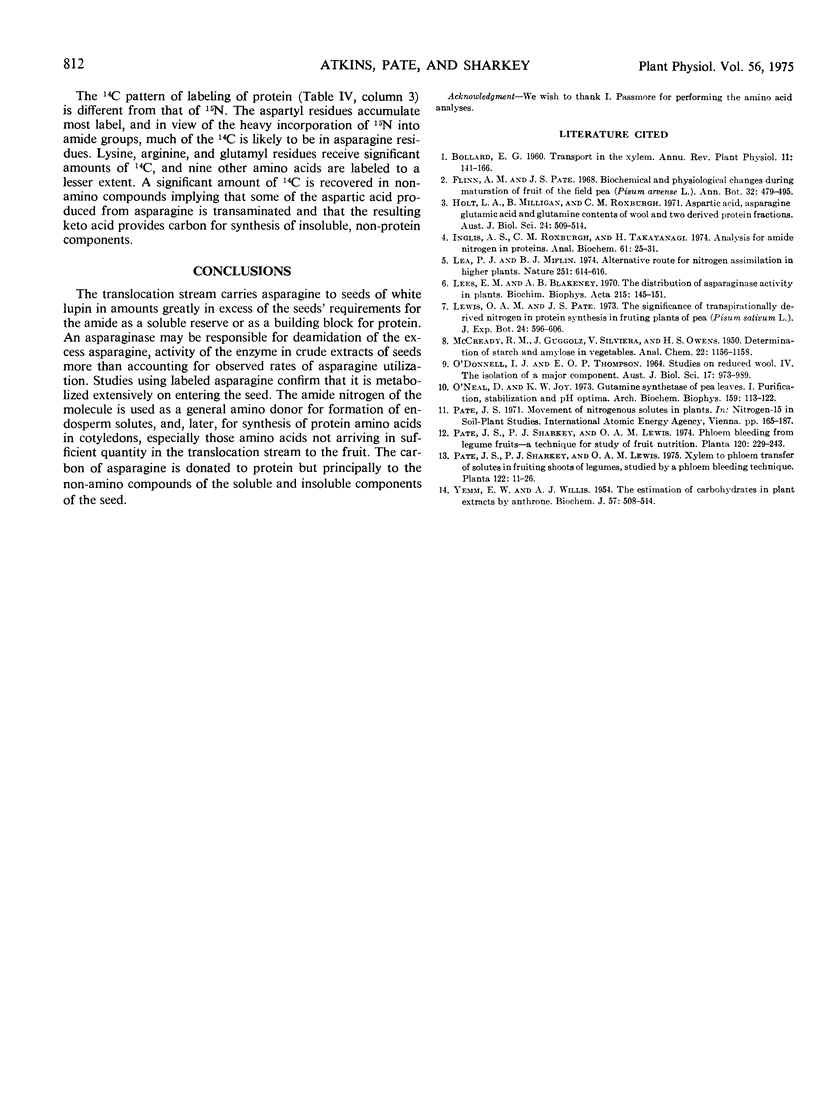
Selected References
These references are in PubMed. This may not be the complete list of references from this article.
- Holt L. A., Milligan B., Roxburgh C. M. Aspartic acid, asparagine, glutamic acid, and glutamine contents of wool and two derived protein fractions. Aust J Biol Sci. 1971 Jun;24(3):509–514. doi: 10.1071/bi9710509. [DOI] [PubMed] [Google Scholar]
- Inglis A. S., Roxburgh C. M., Takayanagi H. Analysis for amide nitrogen in proteins. Anal Biochem. 1974 Sep;61(1):25–31. doi: 10.1016/0003-2697(74)90328-5. [DOI] [PubMed] [Google Scholar]
- Lea P. J., Miflin B. J. Alternative route for nitrogen assimilation in higher plants. Nature. 1974 Oct 18;251(5476):614–616. doi: 10.1038/251614a0. [DOI] [PubMed] [Google Scholar]
- Lees E. M., Blakeney A. B. The distribution of asparaginase activity in legumes. Biochim Biophys Acta. 1970 Jul 21;215(1):145–151. doi: 10.1016/0304-4165(70)90397-1. [DOI] [PubMed] [Google Scholar]
- O'Neal D., Joy K. W. Glutamine synthetase of pea leaves. I. Purification, stabilization, and pH optima. Arch Biochem Biophys. 1973 Nov;159(1):113–122. doi: 10.1016/0003-9861(73)90435-9. [DOI] [PubMed] [Google Scholar]
- YEMM E. W., WILLIS A. J. The estimation of carbohydrates in plant extracts by anthrone. Biochem J. 1954 Jul;57(3):508–514. doi: 10.1042/bj0570508. [DOI] [PMC free article] [PubMed] [Google Scholar]


